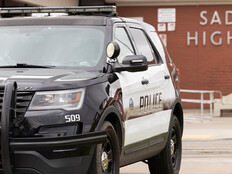State of Cyber and Physical Security
School safety is top of mind for administrators, teachers and parents — as well as students. But despite the effort schools have put forth to improve security, the results of the CDW•G 2009 School Safety Index indicate there is still a great deal of room for improvement.
School safety is top of mind for administrators, teachers and parents – as well as students. But despite the effort schools have put forth to improve security, the results of the CDW•G 2009 School Safety Index indicate there is still a great deal of room for improvement.
School safety is top of mind for administrators, teachers and parents — as well as students. But despite the effort schools have put forth to improve security, the results of the CDW•G 2009 School Safety Index indicate there is still a great deal of room for improvement.
School safety is top of mind for administrators, teachers and parents – as well as students. But despite the effort schools have put forth to improve security, the results of the CDW•G 2009 School Safety Index indicate there is still a great deal of room for improvement.
IT and physical security breaches are on the rise as school districts struggle to maintain the budget and staff required to address threats. Based on responses from more than 400 K–12 district leaders, the CDW•G School Safety Index focuses on the measures that schools are taking to strengthen security, protect wireless networks and monitor buildings.
In the past year, 55 percent of districts experienced an IT breach, such as unauthorized user access, hacking or viruses. And 67 percent suffered a physical breach, such as a break-in, presence of unauthorized persons in school buildings or vandalism. Yet somehow 75 percent of respondents perceive their cyber and physical security to be adequate.
Districts reported gains in securing buildings and networks, but many are missing the opportunity to counter the increasing threat of breaches by sharing best practices with other districts and engaging district administrators regularly on security priorities and investments.
IT to Action
While nearly all districts have acceptable use policies governing network use, only 40 percent said they actively enforce the policies. And 40 percent admitted they spend just four hours or less per month reviewing questionable Internet activity. Districts must place a greater emphasis on compliance monitoring.
As wireless networks proliferate, districts are taking steps to protect themselves, deploying technologies such as encryption, firewalls and wireless intrusion detection. Use of surveillance cameras is also on the rise, with 79 percent of respondents using cameras, up from 70 percent in 2008. However, only half use cameras to monitor indoor common areas, which means they're missing a key opportunity to deter incidents inside school buildings.
Schools have embraced mass notification systems, with 70 percent of districts using mass notification in 2009, compared with just 45 percent in 2008. But despite increased deployment, districts aren't tapping all available communication options that mass notification systems have to offer. For instance, text alerts are in place in fewer than half the districts that use such a system.
Given the evolving nature of threats, schools should know where they stand. The online School Safety Index Self-Assessment Tool at www.schoolsafetyindex.com can help you evaluate your plans and policies and use the findings to make meaningful changes.
In addition to conducting a security self-assessment to learn where your weaknesses lie, districts can shore up security by improving end-user education. Finally, districts can support each other with real-world advice and best practices. Utilizing collective knowledge can help districts prioritize investments and maximize limited budgets.
Security Statistics
Most IT breaches originate internally:
41 percent from students and 22 percent from staff or employees. Physical security breaches are most often caused by unidentified persons (42 percent) and students (37 percent).
Source: CDW•G 2009 School Safety Index








